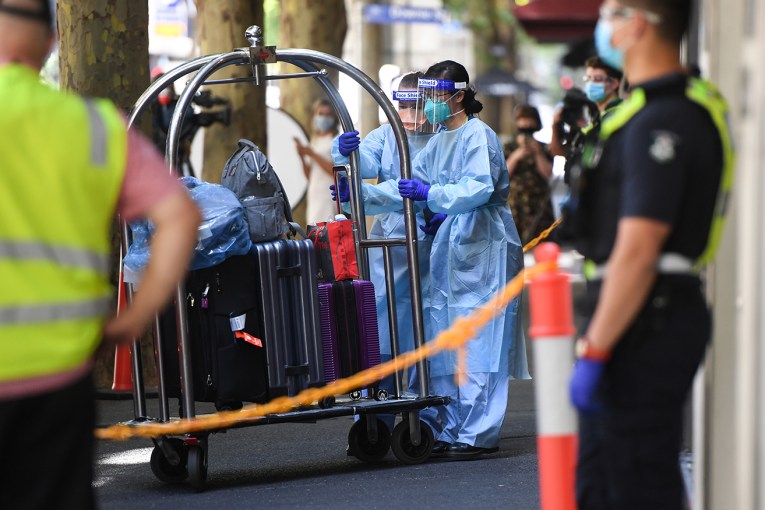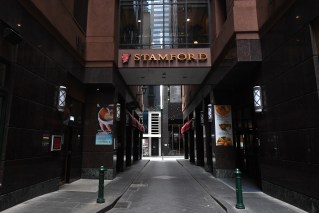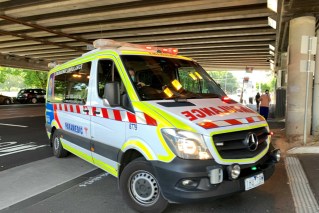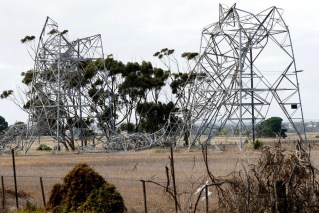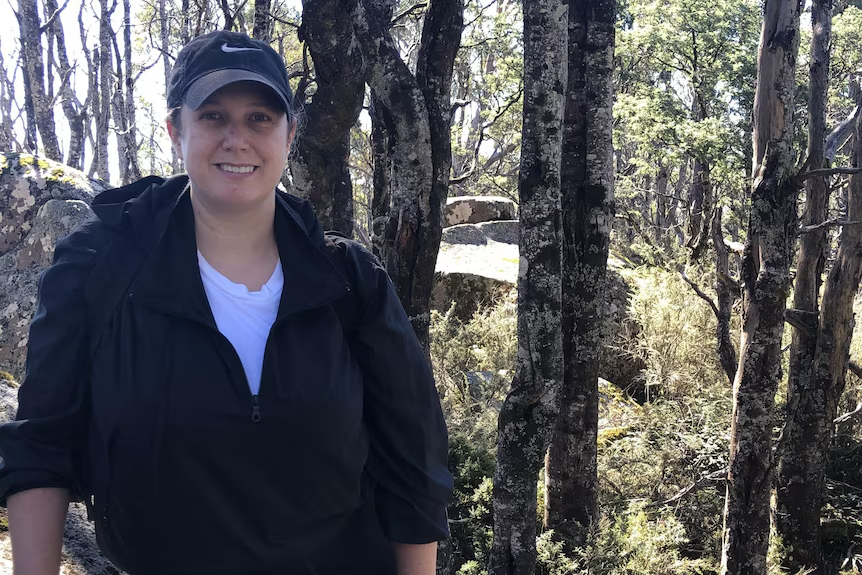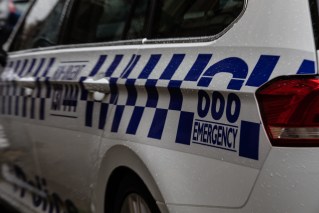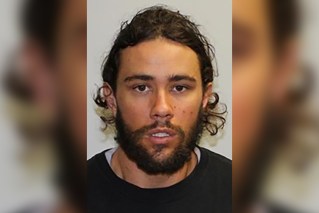Divers and fisherman clash over Port Phillip Bay’s spider crab slaughter
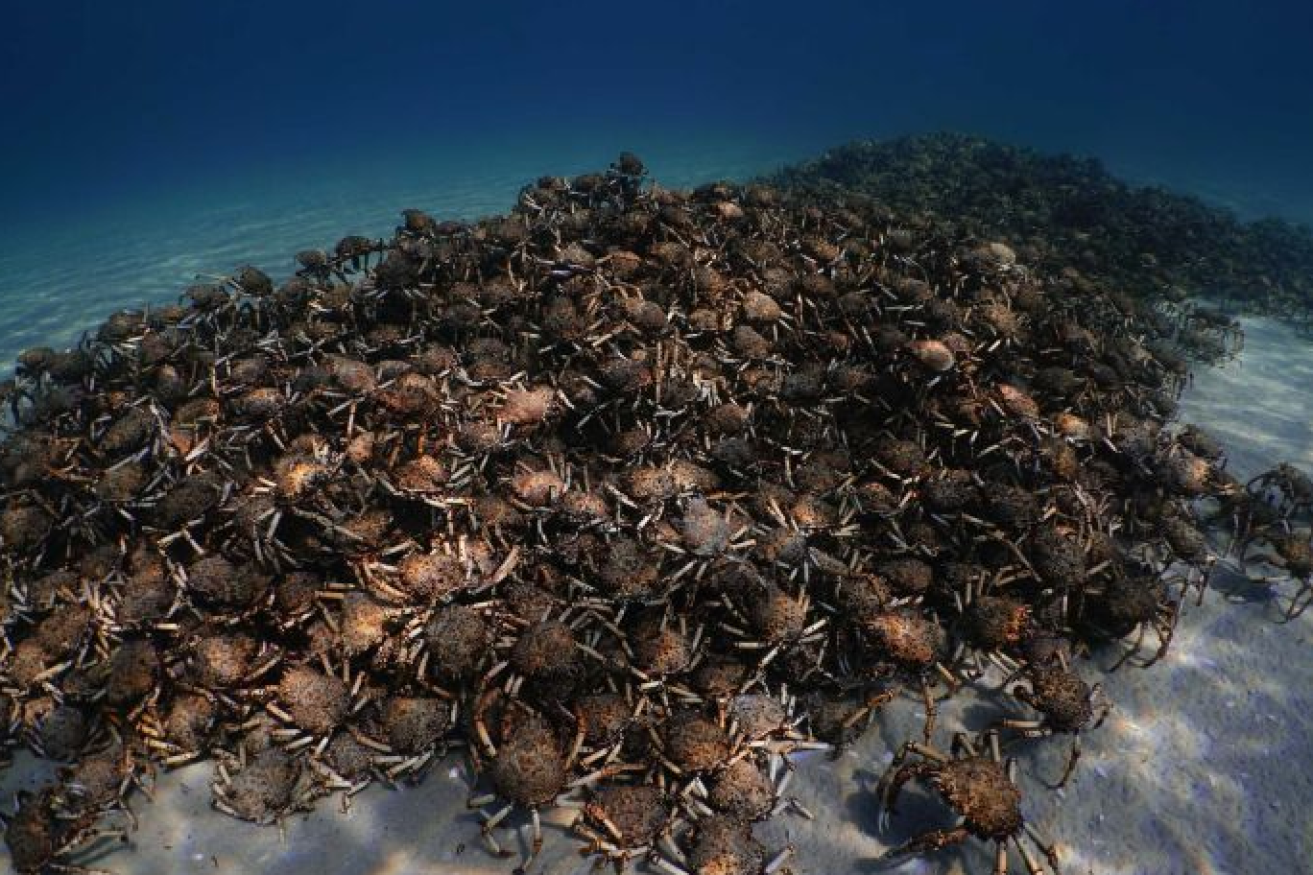
A mound of spider crabs forms in the shallow waters of Port Phillip Bay. Photo: ABC
It’s renowned as one of the greatest animal migrations in the world.
Every winter, tens of thousands of giant spider crabs wander up from the depths of Port Phillip Bay into the shallows to shed their shells.
It is a phenomenon that in recent years has attracted divers from across the globe.
But the crustaceans’ new-found fame has also proved to be a curse, with an unprecedented number of crab fishers flocking to the seaside village of Blairgowrie, south-east of Melbourne, keen to scoop up the crabs when they are easy picking.
With buckets of spider crabs being hauled from the ocean, some divers have started to push back, cutting nets and confronting fishers, prompting calls for authorities to intervene before the whole situation gets out of hand.
“It’s the first time we’ve ever really seen mass fishing of the crabs,” diving enthusiast and underwater photographer Matt Testoni said.

Sign of the times: Spider crabs gathered unnoticed off Blairgowrie for millennia. Now net fishermen are taking their toll. Photo: ABC
“The congregation came in a few weeks ago [to Blairgowrie pier]. Probably 10,000. Maybe a little bit more. They started to gather, and all the divers started to get ready. It was all over social media.
“Then a whole bunch of fishermen turned up and lots of nets. Lots of nets.”
The giant spider crabs were for decades considered Blairgowrie’s best-kept secret, but that changed two years ago after featuring in Blue Planet, a BBC documentary series hosted by Sir David Attenborough.
The crabs that visited Blairgowrie pier this winter are only one of many aggregations that line the shallows from the months of May to July.
RT ThingsCutInHaIf: This is how a spider crab removes its old shell https://t.co/rxwVlK4VPf
— susi (@sumit29136) June 26, 2019
But Mr Testoni said that particular mass of crabs deserved special protection because the town’s jetty made the migration so accessible to the public.
A petition calling for a halt to spider crab fishing during the migration and lower bag limits had nearly reached its target of 10,000 supporters, within a week.
“This is an iconic spot. This is the only spot we know of in Port Phillip where you can go diving or snorkelling or just look at them from the shore,” Mr Testoni said.
“But with hundreds of people coming down just to fish the crabs, within a week we saw the population maybe disappear by about 90 per cent.”
Spider crabs, as their name suggests, have long, gangly legs that provide little meat.
Their flesh is apparently “muddy” and quite unpleasant to eat.

Spider crabs make their annual migration – and the net fishermen are waiting. Photo: ABC
When the ABC went to Blairgowrie pier in late June, which is at the end of the migration, no more than a dozen fishers were trying to snare the few crabs that remained in the shallows.
Some fishers said the crabs in their cooler boxes were for eating but admitted they had not tried that specific type of crab before. Others said they were fishing just for “fun”.
Most were fishing on the side of the pier marked as a marine sanctuary, but none appeared to be over their 30-crab limit.
But some divers said fishers at the pier had regularly exceeded their catch limits, while also littering the seabed with chicken carcasses, rubbish and discarded nets.

A net fisherman ends these crabs’ hopes of returning to their home in the depths of Port Phillip Bay. <i>Photo: ABC</i>
There were also claims the nets had been used to “scrape” pylons, damaging coral and other sea life.
Diver and underwater photographer Jack Breedon said that had led to some confrontations between divers and fishers, including net cutting.
“Last Sunday, I think I removed 12 nets that were either discarded or had been cut by divers,” he said.
“Then again on Monday I removed a further 14 nets from just under the pier.”
He said tensions could boil over unless fisheries intervened.
“The fishermen are not doing anything wrong,” Mr Breedon said.
“We don’t have a problem with the fishermen. We have a problem with the regulations. We think they’re out of date and not adequate for this particular species.
“Not all divers get that, so there was a lot of line cutting, a lot of disgruntled divers having goes at fishermen.
“It was a genuinely unfriendly environment.”
‘Wild’ speculation
Not every diver agrees there is a problem.
Brett Illingsworth has been hitting the water for decades and helped film the spider crabs for the BBC.
“I don’t think the current level of fishing can damage the size of the migrations or the aggregations,” he said.
“This particular aggregation at Blairgowrie is one of many that occur down here.
“There are much larger aggregations within a very short boat ride or long swim of the marina.”
Mr Illingsworth said “wild” speculation was behind some of the concerns and warned against any knee-jerk reactions.
“I don’t think we need a moratorium on crab fishing,” he said.
“Perhaps a look at bag limits rather than a full moratorium.”
In a statement to the ABC, the Victorian Fisheries Authority (VFA) said it had received only a small number of complaints and compliance among crab fishers with the regulations had been “very good”.
“Comments from the public are generally about the perception that fishing for the crabs may not be sustainable,” the spokesman said.
“However, there is no evidence to support this as the crabs are highly abundant, form dense aggregations at different locations in the Bay and fishing is occurring at only two main locations, Blairgowrie and Rye.”
Impact unknowable
Despite their global fame, little is known about the spider crabs, including their overall numbers or where they go after the winter migration.
The VFA has recently committed money to start monitoring the crabs, utilising the expertise of local divers and conservationists like Sheree Marris.
“We don’t know how many are being taken out,” Ms Marris said.
“We don’t know what impact that will have on the reproductive success of the population. There’s so many unknowns.
“All we know is they come in en masse, get undressed and moult, and then they disappear, and we have no idea where they go.”
